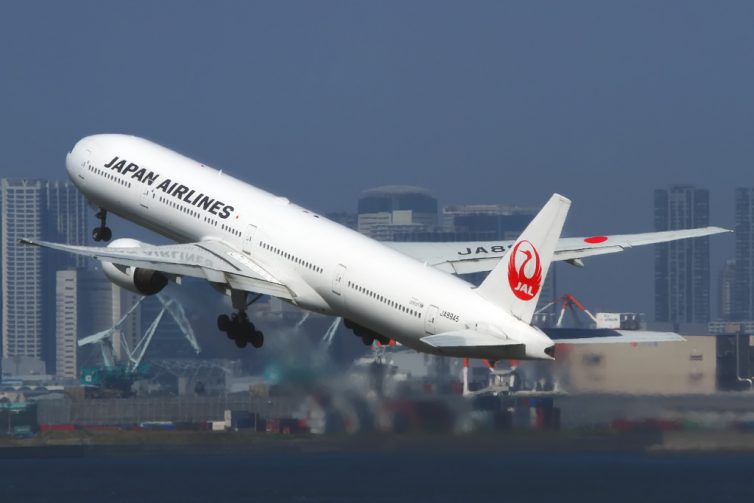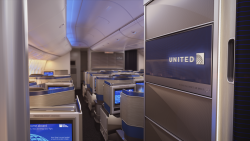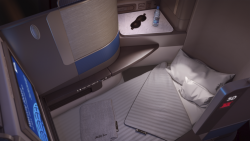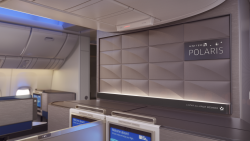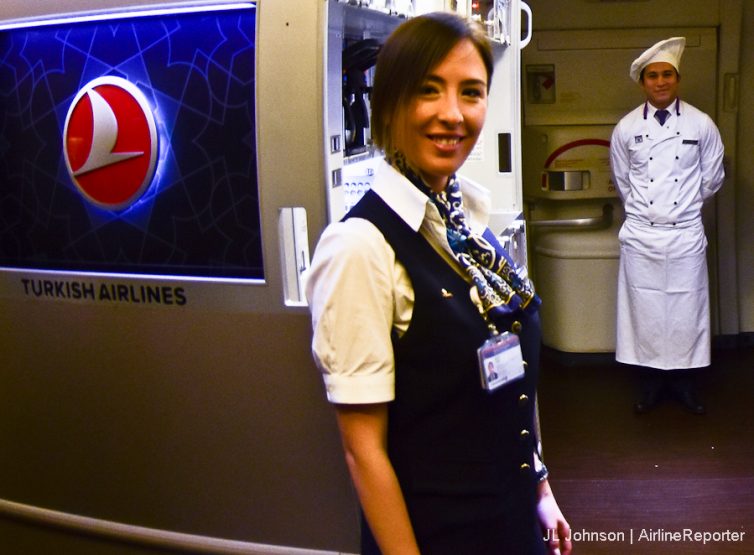
The first thing you see when boarding a Turkish 777
Turkish Airlines is, or should be, well known amongst AvGeeks for their hospitality and commitment to passenger experience. The airline has positioned itself as a “European carrier” which might raise eyebrows to those in the West. Most would reasonably assume Turkey to be a resident of an ambiguous neighborhood we Westerners label as the “Middle East.” For what it’s worth, about half of Istanbul, including the airport, the airline’s headquarters, and various operations are indeed on the European continent. Turkey, as it turns out, is a country divided between two continents, giving real meaning to the phrase “East meets West.” The European side is separated from the majority of the country (the Asian side) by a naturally occurring strait referred to as the Bosporus.
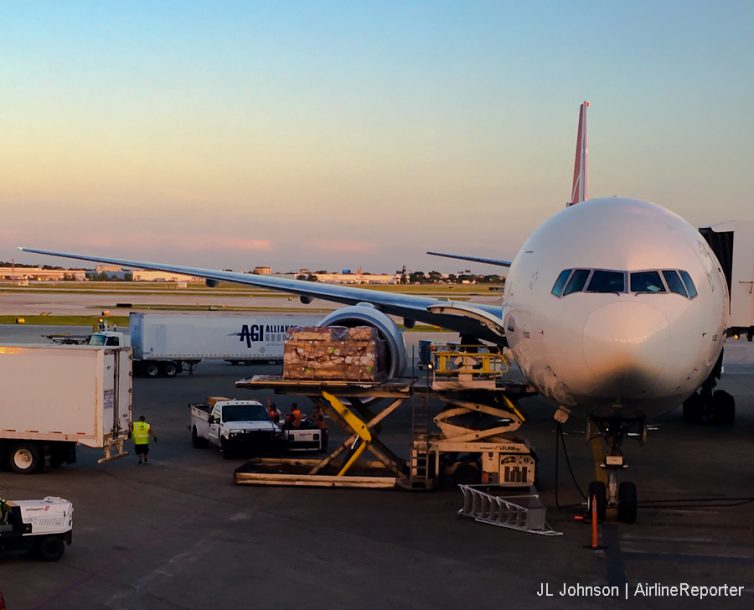
My 777-300ER for the ride from Chicago to Istanbul
Why does all of this matter? Because it gives Turkish Airlines a competitive advantage. It’s easier to go after the European carriers than try to compete in terms of obscenely lavish passenger experience offered by the big three Middle East airlines (ME3). And, let’s be honest. When we think of European carriers, is an overwhelming commitment to passenger experience something that comes to mind? Likely not. It is no wonder then that Turkish Airlines maintains the title of Best Airline in Europe, according to Skytrax.
So how does Turkish differentiate itself from the pack? By offering reasonably priced fares bundled with excellent service and gourmet food. Gourmet food on a plane? Some might think those concepts are mutually exclusive. I beg to differ…
Japan Airlines (JAL) announced last week that its newly-revamped Boeing 777-200ERs (772s) dubbed “JAL SKY SUITE 777” or “SS2” will debut on June 18 from Tokyo Haneda (HND) to Bangkok (BKK). Designated for regional flying, the SS2 will feature now-industry standard lie-flat seating in business class, a roomy premium economy section, and best-in-class nine-abreast seating in economy, going against the grain during a time when virtually every new refurbishment of 777s calls for ten-abreast seating.
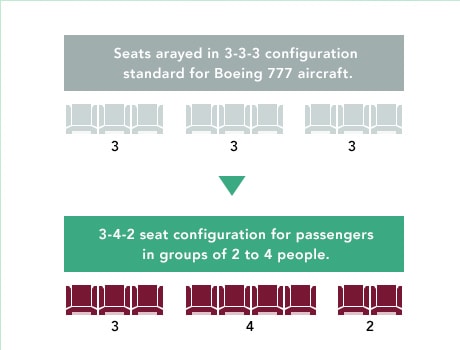
An illustration of the new economy seating configuration on JAL’s “SS2” Boeing 777-200ER – Image: Japan Airlines
What’s even more eye catching is JAL’s choice to go with an asymmetric 3-4-2 arrangement, while every other carrier uses 3-3-3 (well, when they do have nine across on their older planes). Where new premium seating is all the rage nowadays, JAL manages to remember the little people, and the economy cabin steals the spotlight…
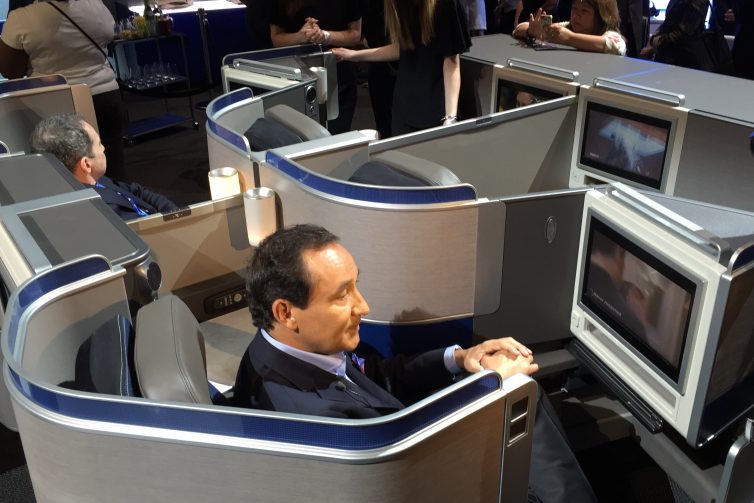
United CEO Oscar Muà±oz checks out the new Polaris product in New York – Photo: Ben Granucci
Culminating a design process that took more than two years, United Airlines unveiled their new United Polaris Business Class on Thursday morning. Speaking at an event in Midtown Manhattan, CEO Oscar Muà±oz spoke of the airline’s renewed focus on the passenger experience, particularly for premium passengers.
This new focus requires across-the-board upgrades to the airline. It means new aircraft, with the 777-300ER, A350-1000, and 787-8/-9/-10 all on order or recently delivered on the widebody side. It means new coffee from Illy on-board, as well as snacks such as the highly touted stroopwaffle.
You see United Polaris is more than just a new seat, it is a new direction for their premium long-haul experience. Sure, the new seat is a big part of it, but United Polaris also includes new on-board amenities and a new lounge experience. Unifying (or uniting, if you will) the entire concept that good sleep is key when flying long-haul.
BONUS: Flying Domestically on the Upper Deck of a United 747-400
At nine airports worldwide, the United Polaris experience starts in the lounge. The new lounges will offer private sleep pods and showers, enabling travelers to rest and refresh themselves before a long flight. They will also feature hot meals served in a restaurant-style setting, as well as premium wines and spirits. The first United Polaris lounge is expected to open at Chicago’s O’Hare International Airport (ORD) by the end of the year. Lounges in Los Angeles, San Francisco, Houston, Newark, Washington Dulles, Tokyo Narita, Hong Kong, and London Heathrow airports will follow in 2017.
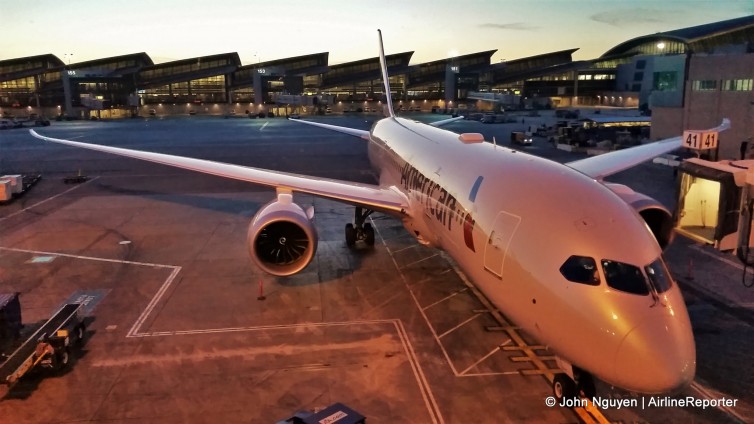
An American Boeing 787-8 (N812AN) at LAX. Southwest does not have any 787s.
A few weeks ago, my esteemed colleague JL Johnson penned a piece extolling the virtues of his favorite carrier, Southwest Airlines. He laid out nine reasons why Southwest was tops in his mind, and quite honestly I didn’t disagree with any of the facts he laid out on why the airline is so immensely popular with so many people.
However, with all the positives Southwest has under its belt, I personally can’t remember the last time I stepped foot on a Southwest 737’¦ at least seven-to-eight years, I think. So if Southwest isn’t so bad, and I think it’s a perfectly fine airline, why have I clocked about 800,000 miles without a single Southwest flight?
First, let’s get one thing clear: This piece isn’t meant to be a hostile response to JL or his story, or even as a ’œSouthwest is bad’ take-down rant. Like I said, he has valid points, and Southwest is a fine airline, one that I even recommend others to fly. The goal of this piece is to give those who are wondering some insight into why someone might choose not to fly Southwest.
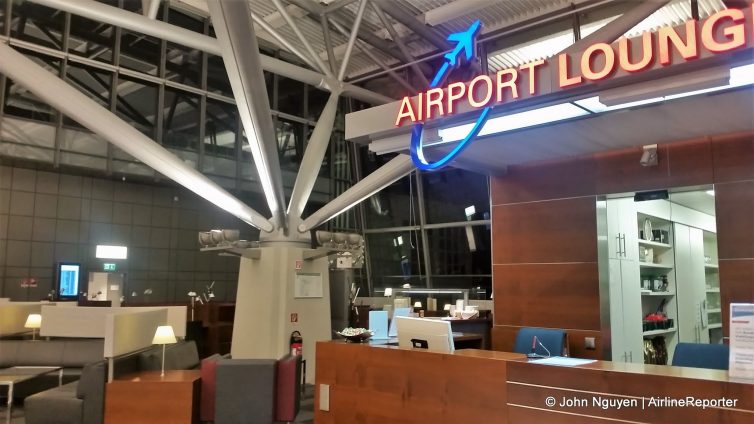
Entrance to the Airport Lounge at Hamburg Airport
I’ve been through many lounges, and a big ’œred flag’ for me is whether I’m about to step foot into a contracted lounge instead of one run by an airline itself. Being a oneworld alliance guy at a non-hub outstation like Hamburg, it could have been like being stranded in a desert, parched and wanting of nourishment. On top of that, I was flying Air Berlin, which isn’t usually among the first three or four airlines one thinks of in terms of quality oneworld lounging. Was I going to have to kill some time [like a savage – too much snark?] or [perusing duty-free items] in the main terminal area, or would I be pleasantly surprised…


